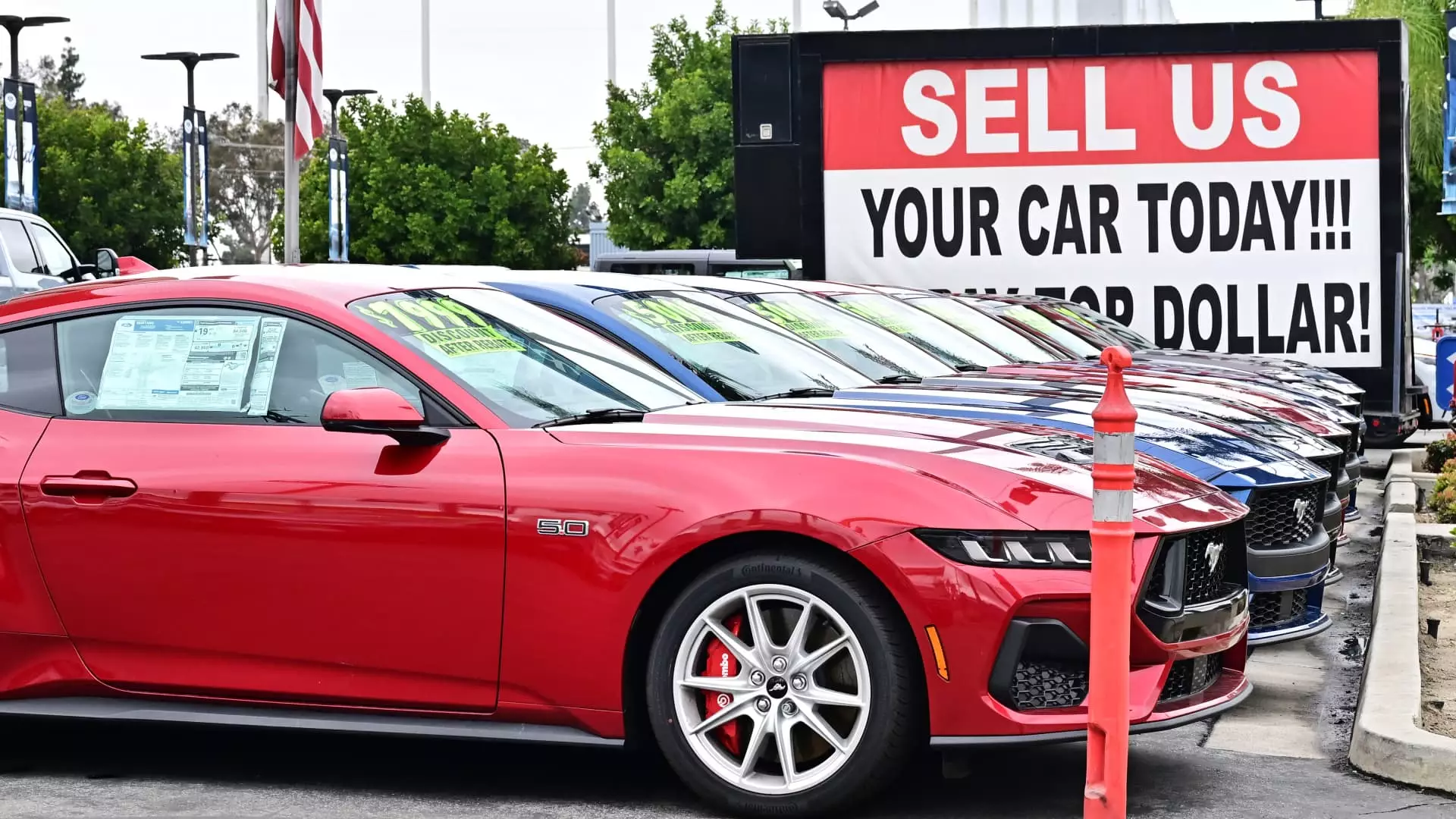In a captivating turn of events, the used vehicle market has displayed signs of adjusting in response to fluctuating demand and external economic pressures. Last month, used car prices experienced a slight decline of 1.5% according to the Manheim Used Vehicle Value Index, although this figure still represents a robust increase of 4% compared to the same time last year. It raises an important question about the health of the automotive industry. Are consumers reacting to a sense of urgency that is exacerbated by economic policies, or are they simply more informed than ever?
Tariff Influence: A Double-Edged Sword
The lingering effects of President Donald Trump’s hefty 25% tariffs on new imported vehicles continue to echo throughout the industry, sending ripples even into the used car market. While these tariffs do not directly affect used vehicle sales, their impact on new car pricing, production levels, and overall demand compounds the pressure on the secondary market. This has created an environment where consumers, who might previously have hesitated, are now compelled to make purchases sooner rather than later, possibly fearing that prices will continue to rise.
What’s striking is how these tariffs have inadvertently shielded the used car market from crashing. Low inventory levels, currently sitting at approximately 2.2 million, have elevated demand, resulting in a unique scenario where the economic climate plays a decisive role in shaping used vehicle pricing.
Market Stabilization or Just a Temporary Rebound?
Despite recent fluctuations, the used vehicle market seems to be in a phase of stabilization after a tumultuous few years characterized by wildly shifting prices. Although retail sales were down by 3% in May compared to April, they still reflect a healthy 4% growth year-over-year. This volatility can be attributed to the unique circumstances the industry is grappling with, including production constraints from the pandemic and ongoing global supply chain disruptions.
Cox Automotive has pointed out that the adjustments in wholesale prices typically precede retail price changes. However, the current lag in retail price adjustment could indicate a market manipulation, where consumers remain locked into inflated prices due to lack of supply. In such a case, the industry should brace for potential backlash when consumers begin to perceive used cars as overpriced.
The Consumer’s Dilemma: Reported Reticence vs. Actual Buying Behavior
Interestingly, while consumers are reportedly holding onto their vehicles for longer periods, which contributes to declining inventory, they are still navigating a marketplace that seems unjustly lucrative for used car dealers. The dynamics here illustrate a fascinating contradiction: heightened consumer awareness and purchasing urgency translate into exploitation of market conditions, resulting in inflated pricing structures that do not necessarily reflect actual vehicle worth.
As the automotive industry approaches what could either be a turning point or another wave of uncertainty, it becomes increasingly crucial to monitor how consumer behavior evolves in response to perceived market conditions. It is vital for consumers to remain vigilant and informed regarding not just their local dealerships but broader economic policies that affect market supply and demand trends. Thus, it becomes obvious that the current state of used vehicle pricing is much more than just numbers on a chart; it embodies the intricate dance of consumer psychology, economic policy, and market forces converging at a unique crossroads.

